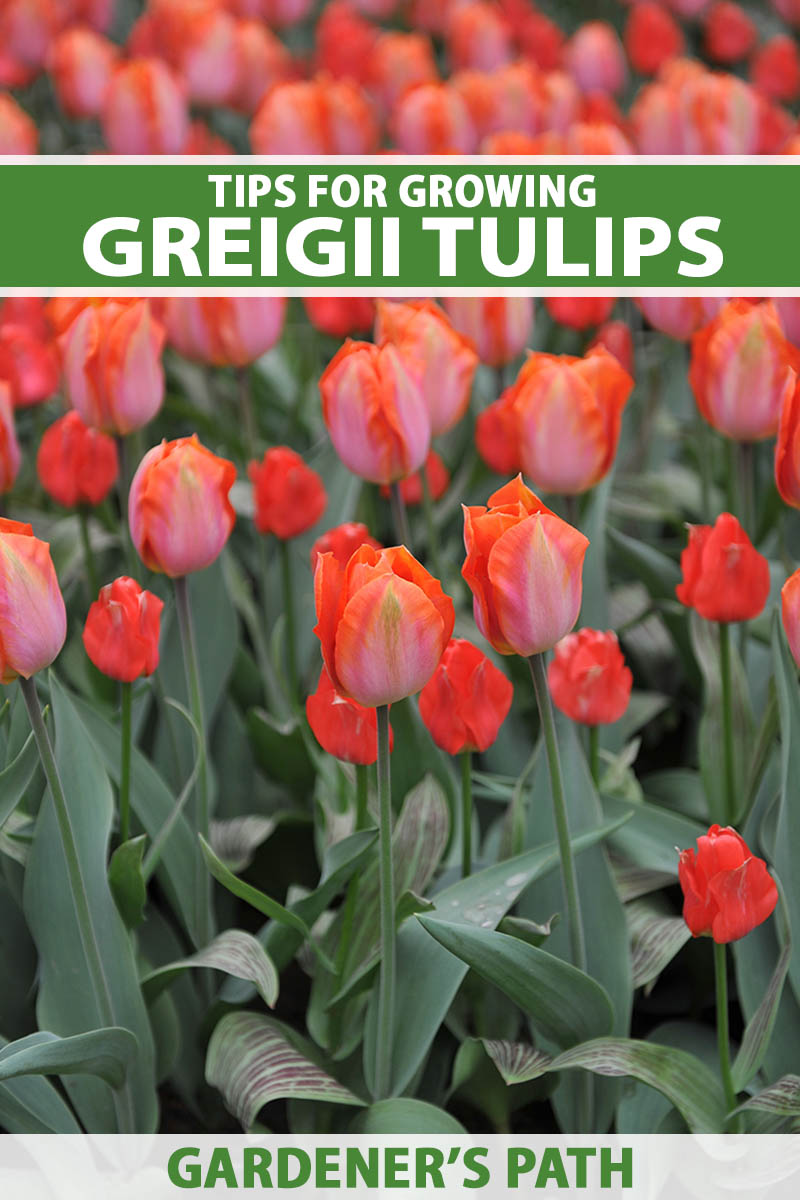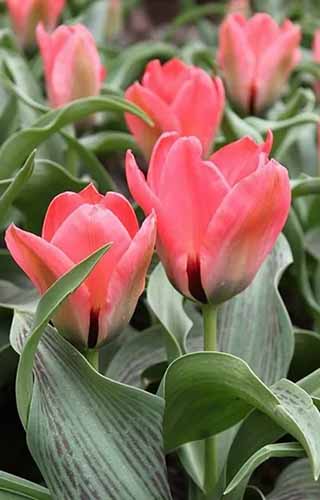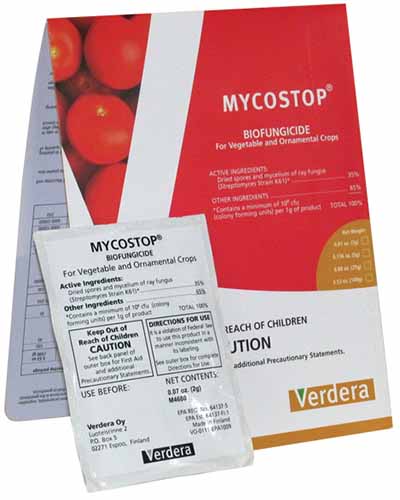Tulipa greigii
There are so many tulips on the market. When I first started researching them years ago for my own garden, I ultimately threw up my hands and just picked the ones that had the prettiest pictures on their packages.
But I’m much pickier now and I know that if I want to fill a specific space, I need to find the perfect species.
When I need a tulip that is low-growing and provides long-lasting interest in the form of foliage and flowers, my go-to is Greig’s tulip, or Tulipa greigii.
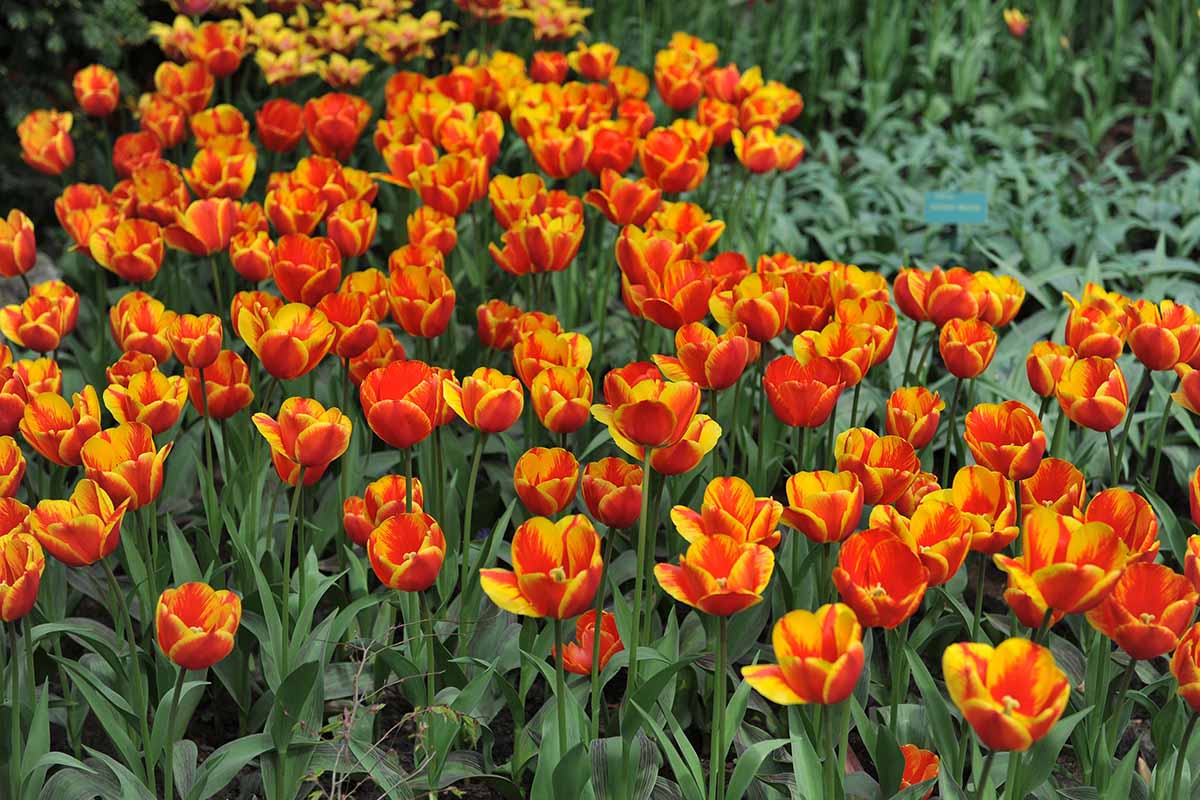
We link to vendors to help you find relevant products. If you buy from one of our links, we may earn a commission.
If you have dreams of a field of tulips, this one is a perfect option.
It naturalizes readily without becoming invasive. And it’s perfect as a border plant, to add life to a rock garden, or even for display in containers.
Part of what makes this variety fantastic is that the plants can produce up to three flowers per bulb, meaning you get a dense cluster of blossoms with just a few specimens.
If you live in USDA Hardiness Zones 3b to 8a, you can grow these short queens – and this guide will discuss cultivation details.
Here’s what I’ll cover:
What You’ll Learn
The sooner we get started, the sooner we can start enjoying our plants, so let’s dive right in!
What Is Greig’s Tulip?
Greig’s tulips are plants of the Tulipa greigii species. The plants grow to about a foot tall when in bloom in early to mid-spring.
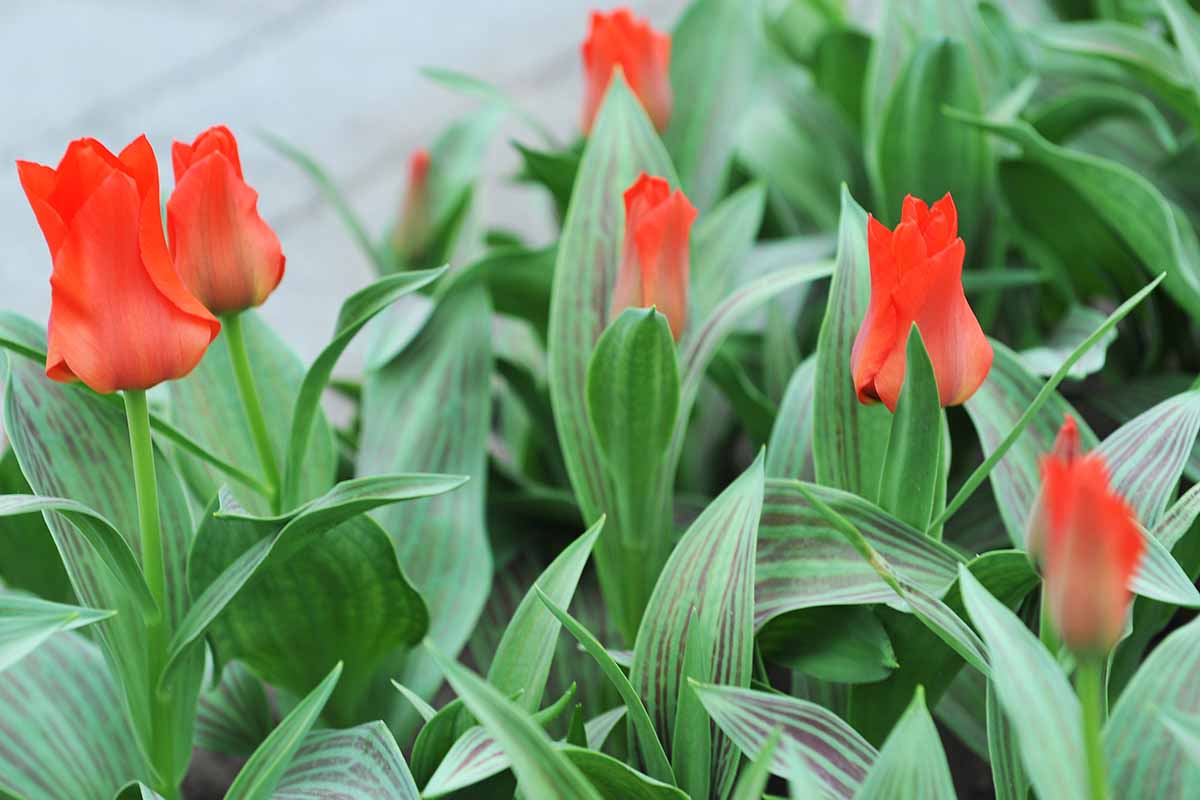
Each single, cup-shaped flower is held on a long stalk, and they’re typically red, salmon, yellow, orange, white, or a combination. A single bulb can produce up to three flower stalks.
The leaves have a gorgeous variegated green and reddish-purple pattern. These are oblong or lanceolate, alternate, and clasping – which means they surround the stem.
And these patterns vary wildly. That’s because they’re caused by a viral infection. If you purchase a plant with a pattern that you love, you can’t count on it being successfully recreated year after year.
These tulips are smaller than the more common hybrids that most people choose for their gardens.
You might picture Holland when you imagine these flowers running wild, but this species is indigenous to Kyrgyzstan in the North and West Tien Shan mountains.
Sadly, they’re endangered in their native home because of overgrazing and livestock traffic, as well as poaching.
Cultivation and History
Greig’s tulip was first identified in Turkestan and sent to Russia, where it was described by botanist and horticulturist Eduard August von Regel in 1877.
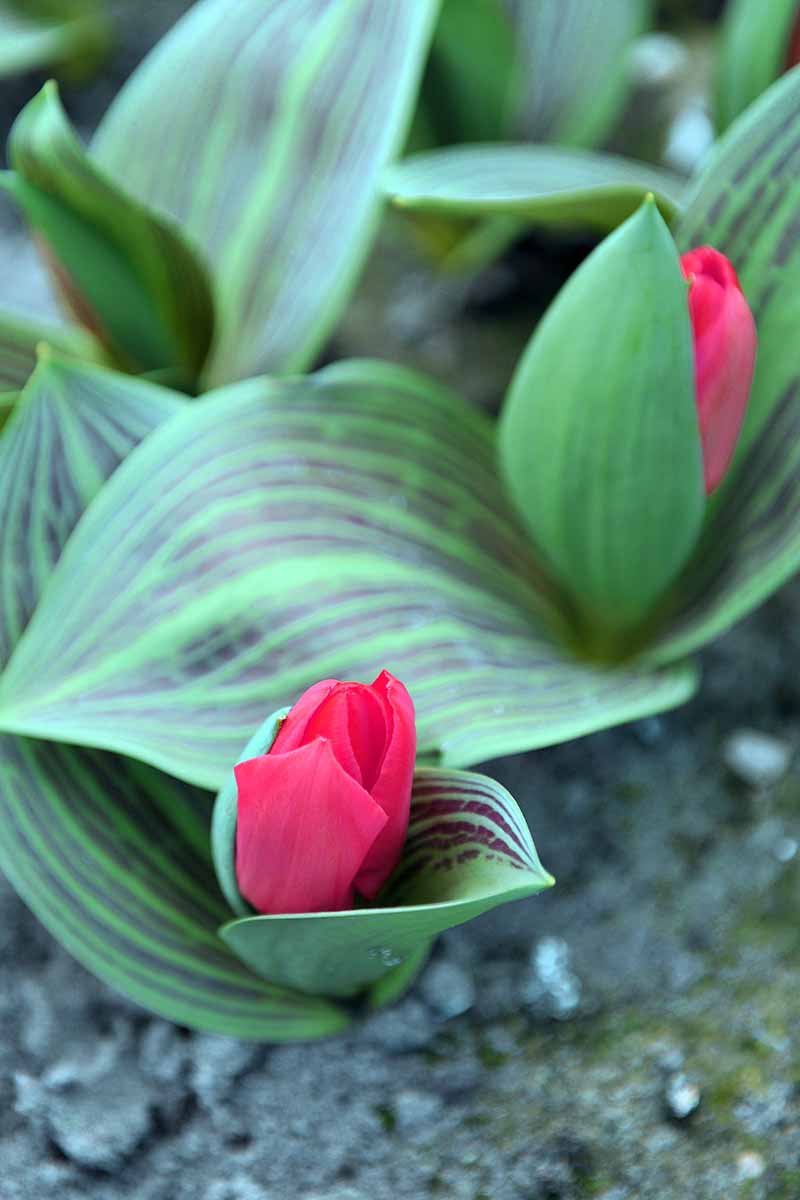
The specific epithet is a reference to Samuel Greig, a leader of the Russian navy and president of the Russian Horticultural Society in the 1700s.
This was the first species of tulip to be introduced into commercial cultivation.
Greig’s Tulip Propagation
Bulbs should be planted in the fall for early spring blossoms.
Before planting, prepare your soil. These plants do best in loamy, loose soil, or slightly sandy soil.
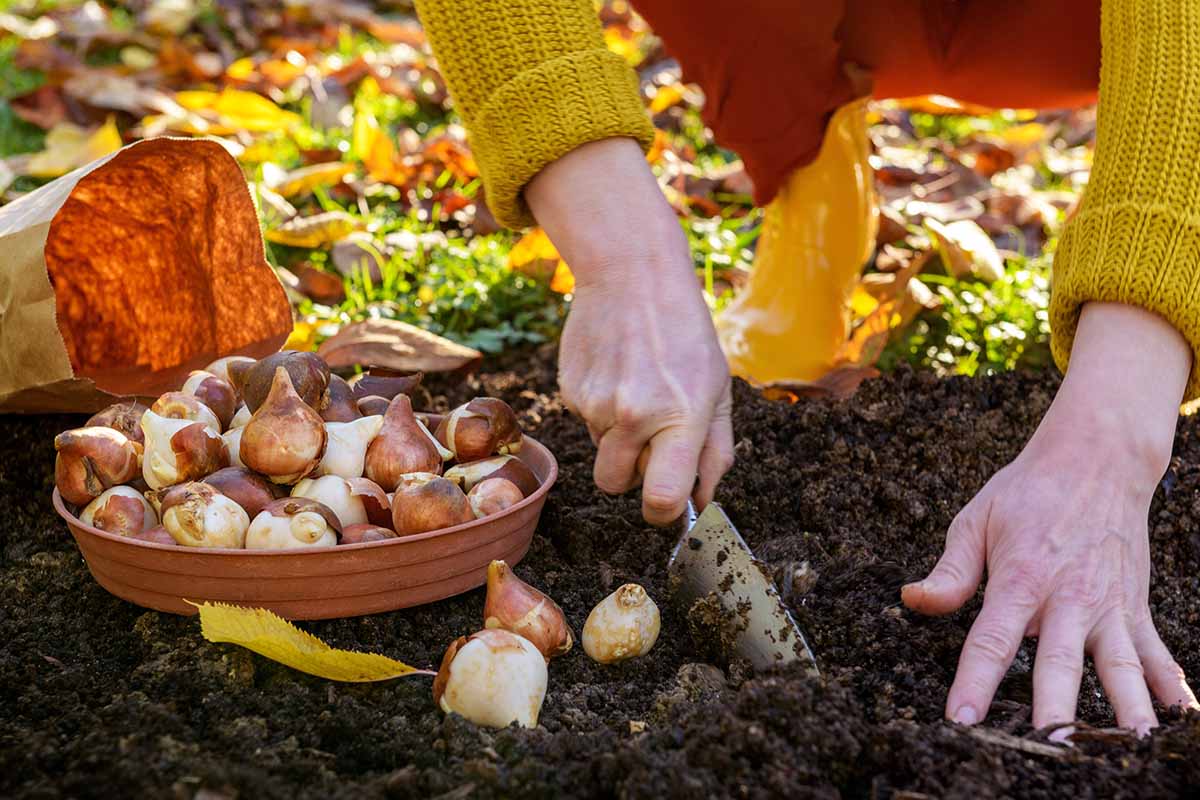
They won’t do well at all in heavy clay, poorly draining soil. But if you have soil that is too sandy or too dense with clay, either can be remedied by working in lots of well-rotted compost.
Place the bulbs six inches apart and four inches deep. You can cluster them a bit closer if you want, but further spacing helps to highlight the leaves.
The plants can grow up a foot wide and crowding them together will press the leaves together, impeding airflow.
After you’ve had your plants in the ground for a few years, you can divide them.
How to Grow Greig’s Tulips
Plant your bulbs in full sun. They flower best when they have six hours or more of sunlight per day.
The leaves, which are admittedly gorgeous in their own right, will still emerge in shadier situations, but the flowers won’t bloom.
These plants don’t do well once temperatures climb above 70°F, which is why they won’t thrive in Zones 8b and above.
If you want to grow tulips in warmer regions, such as in Zones 8b and 9, look for bulbs that have been cold-treated and treat them as annuals.
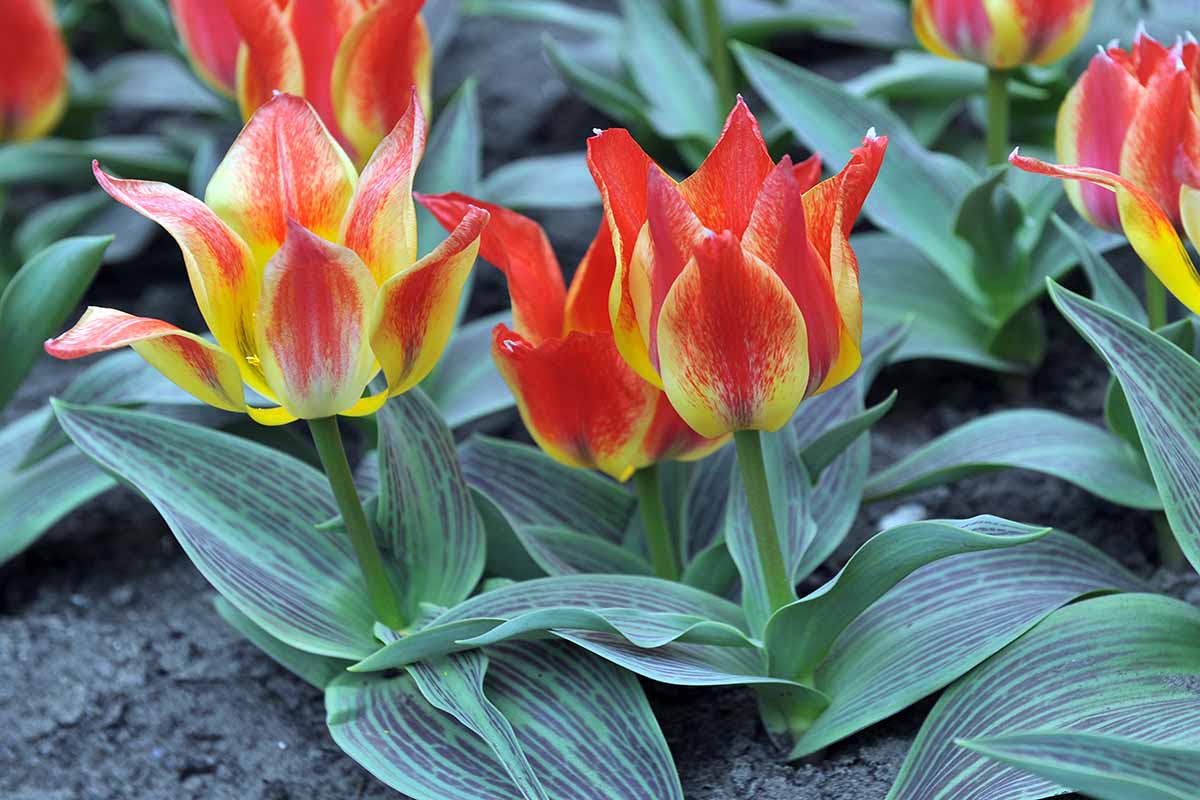
The soil needs to be well-draining and rich, ideally with a pH between 6.0 and 6.5.
And again, this isn’t the plant for extremely sandy or heavy clay areas. If you have your heart set on growing Greigii tulips and you have less-than-ideal soil, grow them in containers or raised beds instead.
The soil should be allowed to dry out a bit between watering. If you stick your finger into the soil, it should feel dry halfway down the length of the bulb. If it’s any wetter, don’t supplement with water.
There’s a lot of information out there about how and when to feed tulips.
Most experts agree that it should be done in the fall, and I find my plants do better when I feed them then. That way, the developing bulbs have all the nutrients they need for blooming in spring.
If you’re growing them as annuals, don’t worry about fertilizing. Similarly, don’t feed the bulbs in the first year after planting.
They have all the nutrients they need built right in when you first plant them, and it’s only in the following years that they’ll need a boost.
In the fall, dress the ground above and around the bulbs with a granular food.

Jobe’s Organics Granular Fertilizer
Make life easy on yourself and use a food made for bulbs like Jobe’s Organics, which is available at Amazon in four-pound bags.
Growing Tips
- Plant in full sun for the best flowering.
- Water when the soil has dried to halfway down the bulb.
- Feed in the fall after the first year with granular fertilizer.
Pruning and Maintenance
The flowers emerge in early to mid-spring and stick around for a few weeks. Once the flowers fade, go ahead and remove the flower stalks.
Wait until the leaves are fully yellow or brown in the late spring for removal. Gently pull them away from the plant.
If they resist, leave them a bit longer. The leaves provide nutrients to sustain the bulb, so if you cut them off or pull them prematurely, you deprive the bulbs of nutrients.
Greig’s Tulip Cultivars to Select
There are many cultivars out there, and new ones are hitting the market all the time. I’ve yet to run into one that didn’t grow well for me, but here are a few standouts:
Cape Cod
Apricot petals edged in golden yellow pop up on 10-inch-tall stems in early spring, making for a fiery display.
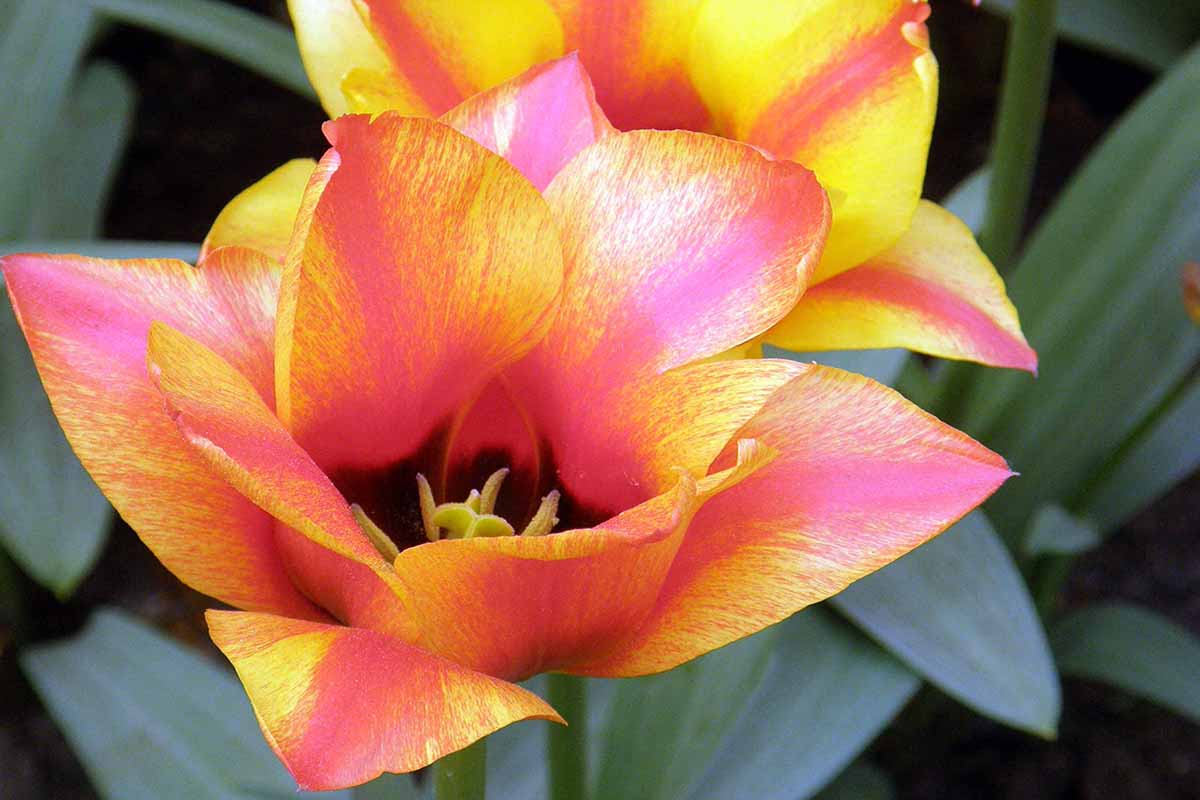
Like all Greig’s tulips, ‘Cape Cod’ naturalizes readily without becoming invasive, so let it take over a bare patch of the garden.
Easter Surprise
Come Easter time, you’ll enjoy these lemon yellow flowers tipped in an ombre of salmon pink and red.
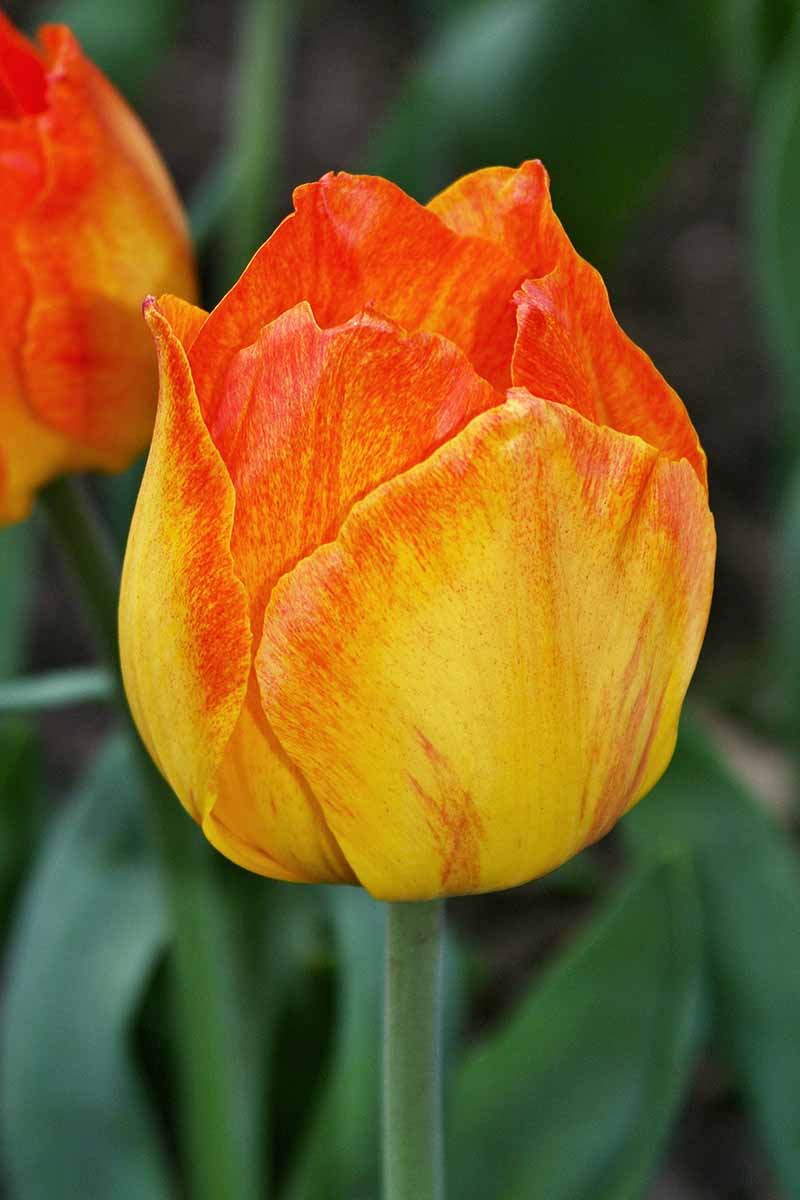
The plants stay under eight inches tall and sports maroon-tinted leaves.
Oratorio
‘Oratorio’ is on the petite side, growing to about six inches tall or so, so these bulbs are perfect as a low border.
They bloom a few weeks earlier than a lot of cultivars, but before the salmon pink blossoms pop up, you get to enjoy the purple-marked foliage.
Find packages of eight bulbs at Walmart.
Red Riding Hood
‘Red Riding Hood’ has striking scarlet blossoms with just a hint of peach on the outside base of the petals.
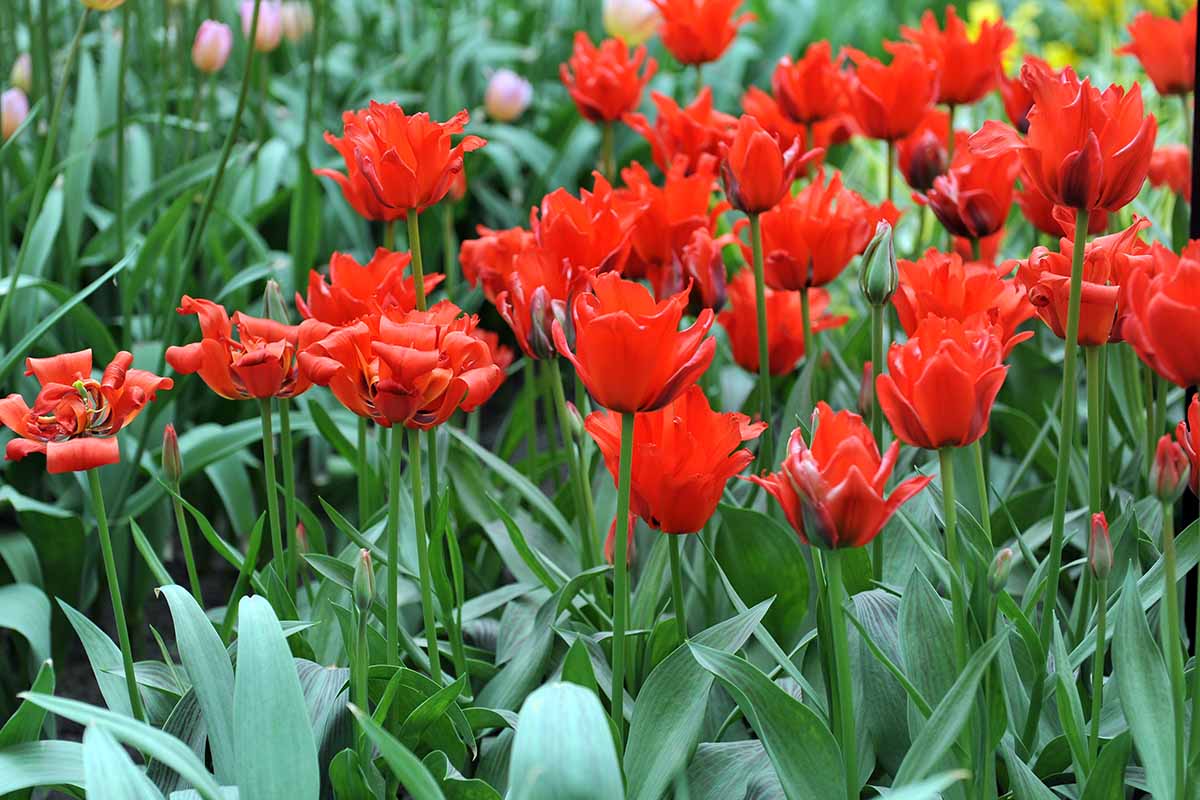
Inside, the petals are accented in black at the base. And the reddish-purple leaves act as the perfect accent for the bold blossoms.
Zampa
The creamy yellow petals with a watercolor stripe of orange-red down the outer center highlight a border or stun as a mass planting.
‘Zampa’ stays under eight inches tall.
Managing Pests and Disease
I’ve repeatedly heard the claim that because plants in the Tulipa genus contain some toxic compounds, herbivores won’t eat them. Well, someone needs to tell that to the deer and voles in my neck of the woods.
While herbivores are my biggest challenge, pests and disease can also be a problem. Let’s talk about those hungry herbivores first.
Herbivores
Historically, humans have eaten tulip bulbs during times of famine. So it should come as no surprise that herbivores will target them.
Nonetheless, I’m always surprised by how much the squirrels, deer, and mice will go after the bulbs.
Deer
If persimmons are “deer candy,” tulips are “deer veggies.” Ungulates will devour the leaves, flowers, and even the bulbs during times of scarcity.

I once watched a herd of deer moving through my winter garden, and I marveled at their beauty and graceful movement in the snow-filled dormant garden.
But when they started pawing at the ground and pulling up my tulip bulbs – they weren’t so cute then!
If you have deer in your area, then you know the best control is exclusion. Read our guide to learn how to keep deer out of your tulip beds.
Mice, Squirrels, and Voles
Rodents like mice, squirrels, and voles will devour the bulbs, whether they find them in storage or dig them up from the ground.
Voles will find the bulbs while tunneling underground, squirrels will dig them up, and mice will take advantage of shallow bulbs.
Sometimes, I just chalk it up to the cost of gardening when I lose a few bulbs. But if the rodents start to destroy your garden, the best option is to move your plants into containers.
If you can’t stand the thought of potting up these flowers, you can bury wire mesh under and around the bed. Raised beds make the work easier, but you can do this in the ground, too.
Then, bury the bulbs an inch or two deeper than you normally would. This can be enough to discourage tiny squirrel and mouse paws.
Some gardeners report that repellants work. They never have for me, but in the battle against the four-legged marauders, we shouldn’t leave any tools on the shelf.
Insects
There are two main pests that regularly visit Greig’s tulips. Aphids are less common, while slugs and snails are common foes.
Aphids
If you’ve never dealt with aphids before, it’s only a matter of time. They’re extremely common in the garden, though I don’t find them to be particularly common on tulips.
These insects are small and oval shaped, and they use their sucking mouthparts to withdraw the sap from the leaves and stems of the plant. They typically like to cluster in areas where they can hide, like the base of leaves or right under the flower heads.
I usually find I can control aphids by spraying them off with a steady stream of water. Do this every few days. If that’s not enough, visit our guide to learn other ways of how to control aphids.
Slugs and Snails
Slugs and snails will turn the leaves into lace. They can even kill a plant if it’s young enough.

With large, well-established bulbs, slugs and snails can eat the plant to the ground and prevent it from flowering that year, though it might be strong enough to return the following year.
For control, I just stick with nontoxic slug bait, like Sluggo, available from Arbico Organics.
It’s the most reliable option for keeping mollusks away from high-value plants like tulips.
You can learn more about how to deal with slugs and snails in our guide.
Disease
Greig’s tulips are particularly tough when it comes to diseases – except for the virus that gives them their distinct look. When some of my showier hybrids are flailing, they are still going strong.
These plants can contract a few fungal issues, but this typically only happens when plants are stressed or growing in less-than-ideal conditions.
The primary ailment that you might see with tulips is Botrytis blight.
Botrytis Blight
Botrytis blight, also called tulip fire, is a common disease in the garden. Caused by fungi in the Botrytis genus, B. tulipae is a tulip-specific fungus.
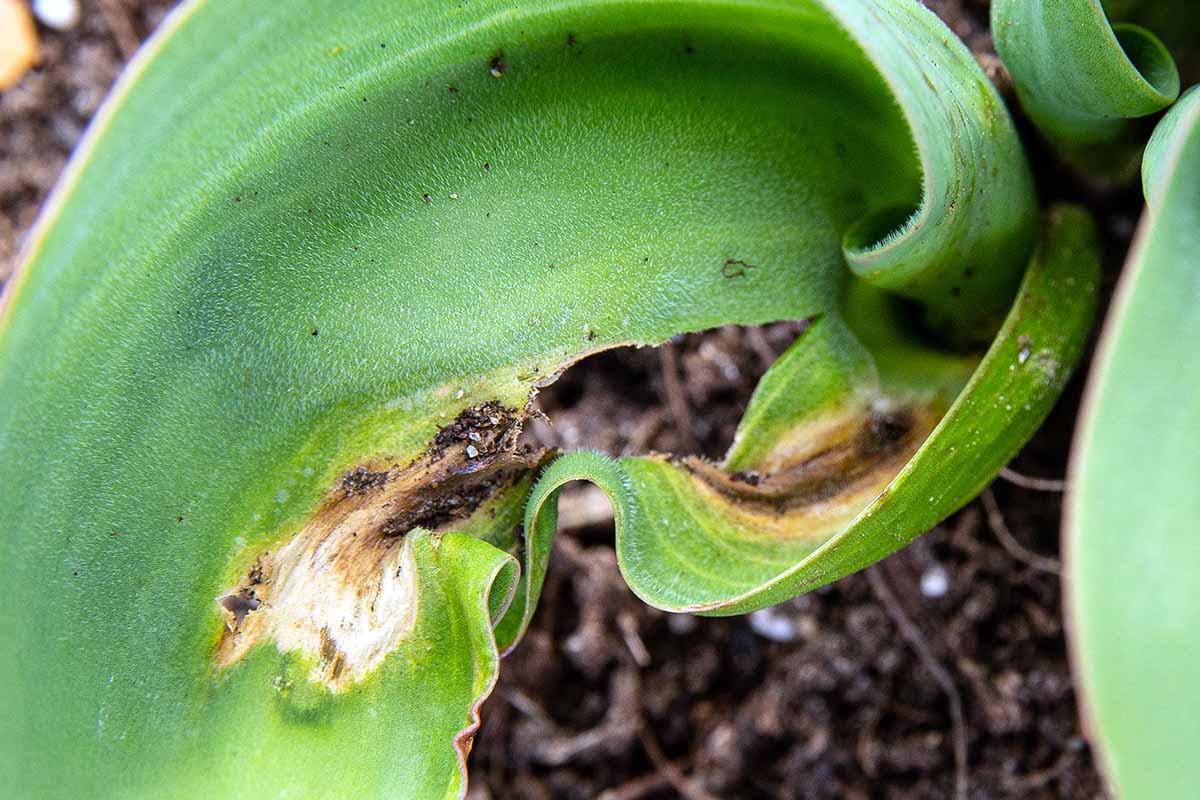
The fungus thrives in cool, wet conditions. A nice, long stretch of overcast skies with plenty of rain and humidity over 80 percent is just the thing this pathogen needs.
But even that might not be enough for the disease to spread throughout your garden. It will sometimes wait for a bit of damage to sneak in – hailstorm, pest damage, or mechanical damage leaves the plant exposed.
Symptoms include twisted, distorted leaves, shoots that don’t unfurl, small spots on leaves and petals, and in severe cases, large sunken scabby areas.
As the disease worsens, you’ll see large lesions on the leaves and gray mold might appear on the lower part of the plant and on the bulbs, causing them to rot – whether in storage or underground.
Avoiding this problem starts with buying from reputable sellers who guarantee disease-free bulbs.
Be extremely careful when planting or when lifting the bulbs for storage to avoid damaging them. If you come across a bulb that looks moldy, dispose of it in the garbage, not the compost.
Avoid overwatering and overcrowding your plants to improve air circulation.
While you’re at it, you might just want to pack up and move somewhere dry and sunny during the spring because – and I hate to be the one to tell you this – there is no cure for tulip fire.
There’s no cure and it tends to get worse year after year. But you can limit the spread by removing symptomatic leaves and stems as soon as they start to fade.
You can soak the soil or spray the bulbs with a fungicide, both as a preventative and to slow the spread.
My go-to is Mycostop, which harnesses the power of the beneficial bacteria Streptomyces strain K61.
Arbico Organics carries it in five- or 25-gram packets. Follow the directions closely for gray mold.
Best Uses for Greig’s Tulips
A single plant is cute, but these tulips make the biggest impact when you group them together. You can also force them to bloom indoors during the winter for some color.
Greigii tulips can be grown in containers, lawns, rock gardens, and cut flower gardens, naturalized, grouped en masse, or grown as border plants.
The downside of tulips is that they disappear in the summer, leaving bare soil in their place.
During the dormant months, don’t hesitate to plant something over the bulbs. Shallow-rooted annuals like cosmos, petunias, phlox, sweet alyssum, and zinnias make great picks.
Quick Reference Growing Guide
| Plant Type: | Perennial flowering bulb | Flower / Foliage Color: | Red, pink, yellow, white, bicolored/green, variegated |
| Native to: | Kyrgyzstan | Water Needs: | Moderate |
| Hardiness (USDA Zone): | 3b-8a | Maintenance: | Low |
| Bloom Time / Season: | Spring | Tolerance: | Light frost, some drought |
| Time to Maturity: | 1 year | Soil Type: | Loose, rich, slightly sandy |
| Exposure: | Full sun | Soil pH: | 6.0-6.5 |
| Spacing: | 6 inches | Soil Drainage: | Well-draining |
| Planting Depth: | 4 inches | Companion Planting: | Cosmos, petunias, phlox, sweet alyssum, zinnias |
| Height: | 12 inches | Avoid Planting With: | Deep-rooted perennials |
| Spread: | 4 inches | Family: | Liliaceae |
| Growth Rate: | Fast | Genus: | Tulipa |
| Common Pests and Diseases: | Aphilds, deer, mice, squirrels, voles; tulip fire | Species: | Greigii |
These Tulips Are a Treat
As much as I love tulips, I have to admit that growing them can be a bit of a letdown outside of the few weeks that they’re in bloom.
But the striped, wide leaves add an element of interest to the garden during the growing season.
What’s appealing about Greig’s tulips for you? Is it their size? The leaves? Something else? Let us know in the comments.
Do you know what’s even better than a bed full of Greig’s tulips? A garden full of several species!
If that sounds good to you, read some of our other guides to growing different beauties in the Tulipa genus, such as:
